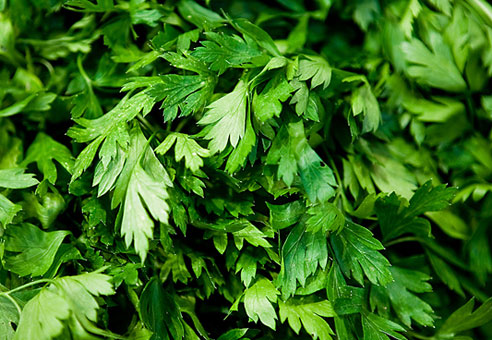 There is, without a doubt, a single meal I could eat every day of my life. It lies in old, family traditions which have, unfortunately, been lost to time. My grandfather (the person for whom I am a namesake) was a Lebanese immigrant, and although he passed away before I was born, some of his heritage survived. Several of my aunts made elaborate Lebanese meals for the family when I was growing up. I have no idea if my grandfather knew how to cook the foods of his homeland and taught them - a minor detail I forgot to ask before that history could be told. Regardless, my aunts could make some killer stuffed grape leaves (the Lebanese version is stuffed with lamb and rice, and often stewed with tomatoes and lemon), kibbi (look it up...not your mother's meatloaf!), and the dish I am going to share: tabouli.
There is, without a doubt, a single meal I could eat every day of my life. It lies in old, family traditions which have, unfortunately, been lost to time. My grandfather (the person for whom I am a namesake) was a Lebanese immigrant, and although he passed away before I was born, some of his heritage survived. Several of my aunts made elaborate Lebanese meals for the family when I was growing up. I have no idea if my grandfather knew how to cook the foods of his homeland and taught them - a minor detail I forgot to ask before that history could be told. Regardless, my aunts could make some killer stuffed grape leaves (the Lebanese version is stuffed with lamb and rice, and often stewed with tomatoes and lemon), kibbi (look it up...not your mother's meatloaf!), and the dish I am going to share: tabouli. Tabouli is one of those foreign dishes which has been horribly maligned in this country. Most versions you'll encounter, especially those which come from a box, are mostly cracked wheat (called bulgur). In my book, this is a sin. Not only because it isn't the way any self-respecting Lebanese person would make it, but also because it limits the amount of the salad's healthiest ingredient: parsley.
Yes, parsley. Seriously. That stuff they use for garnish. In fact, you don't even have to mess with that flat-leaf stuff - the curly, side of the plate version works better!
Parsley is considered a superfood. Believe it or not, it contains three times the amount of vitamin C as Florida's favorite fruit (sorry, citrus lovers!). Since it is cold and flu season, you're probably thinking that I am going to tout vitamin C's ability to shorten and prevent the sniffles and coughs. Well, in spite of what you've heard for years, that isn't really true. Vitamin C taken after a cold starts does nothing, and daily use only minimally shortens severity and duration of the illness. In spite of this, the antioxidant plays a very important role in the absorption of iron and calcium from the diet, and it also acts as an vital component of collagen, the structure which gives our skin its elasticity and suppleness. Parsley also contains high levels of a B-vitamin called folic acid. This vitamin is shown to prevent birth defects when ingested by women of child bearing age, and can help in conditions ranging from neuropathy to Alzheimer's. Perhaps because of folic acid and perhaps because of other flavonoids, parsley has been touted as a preventing colon and cervical cancers. Oh, and parsley is great for bad breath (halitosis).
Lots of folks who are into juicing have jumped on parsley's health benefits. To me, parsley juice sounds pretty gross. This recipe, however, makes it much tastier (though check your teeth before smiling!).
Ingredients
- 2-3 bunches curly parsley, finely chopped (about 5 cups)
- 1/2 cup bulgur wheat
- 8 spring onions
- 1/4 cup mint, finely chopped
- 3 Roma tomatoes, diced
- 1/4 cup extra virgin olive oil
- 1/4 cup fresh squeezed lemon juice
- 1/4 tsp black pepper
- 1/4 tsp sea salt
- pinch cinnamon
- pinch nutmeg
- pinch allspice
Instructions
Soak bulgur wheat in 2 cups water for 30 minutes. Drain, squeeze out excess water and and set aside. Chop parsley and mint, mix together. Finely chop the white parts of the spring onions, add to the bulgur wheat. Add black pepper, salt and spices to wheat. Finely chop the green parts of the spring onions, add to the herb mixture. Combine wheat mixture, herb mixture, diced tomatoes, olive oil, and lemon juice. Toss to mix and serve.